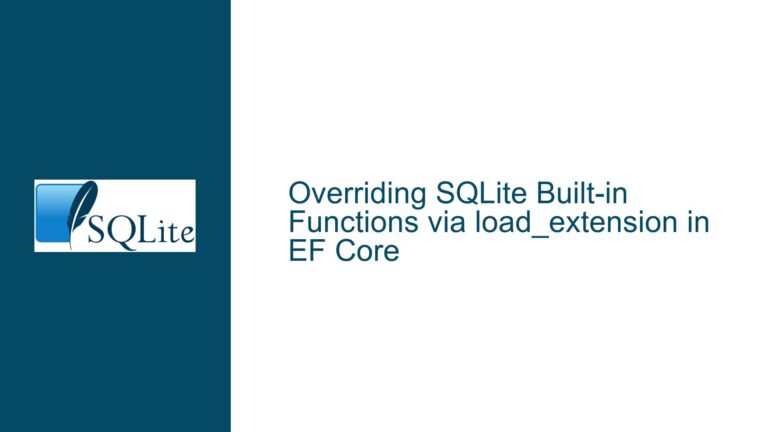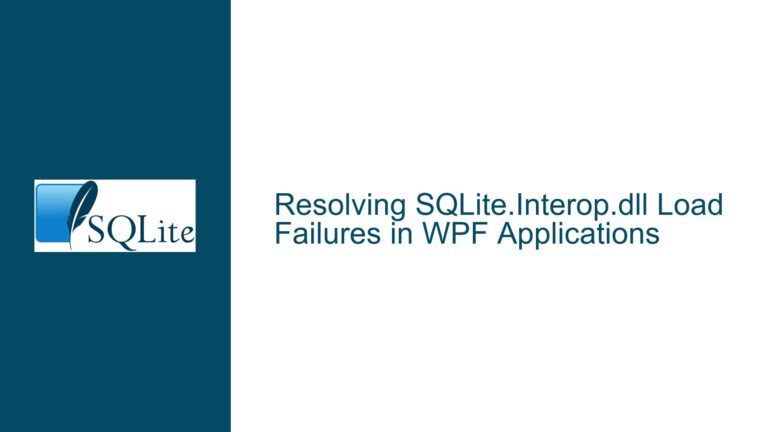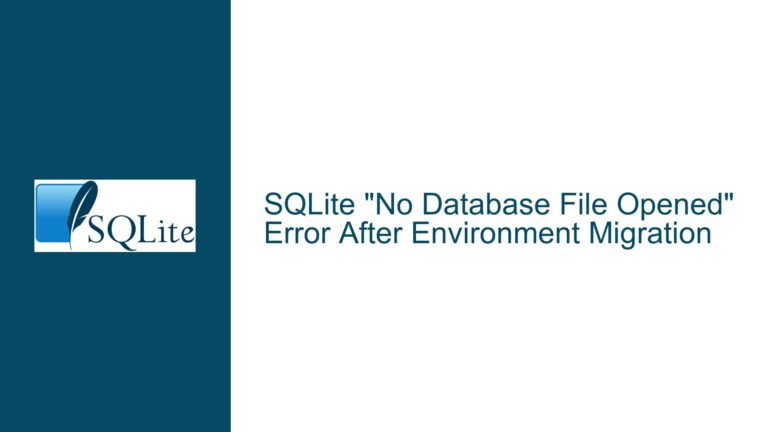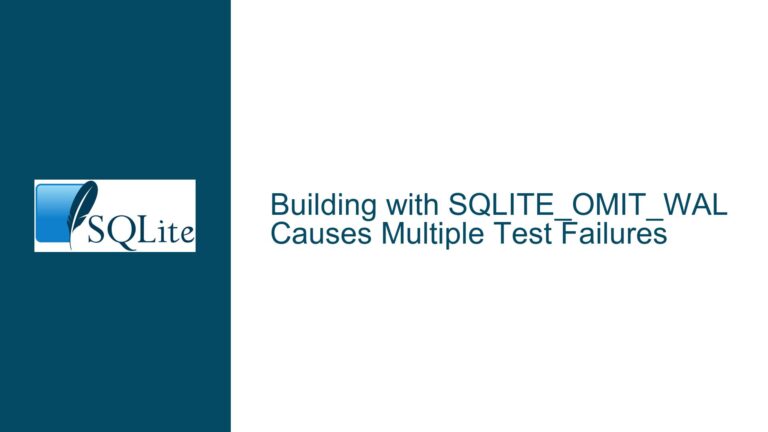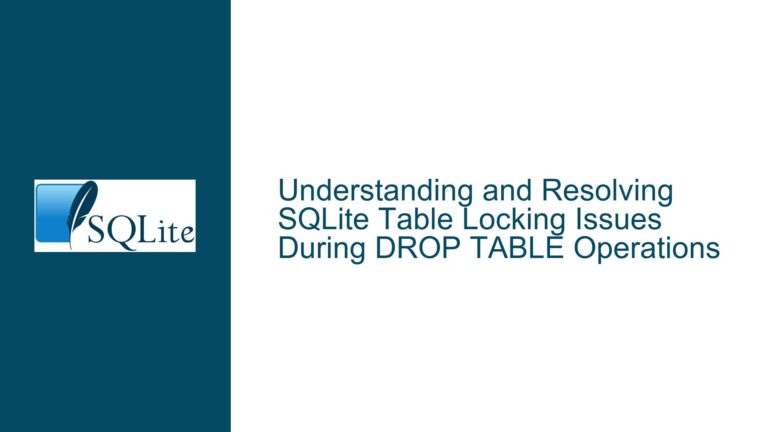Integrating SQLite with IBM Cloud Object Storage for AI Datasource
Understanding the Integration of SQLite with IBM Cloud Object Storage
The integration of SQLite with IBM Cloud Object Storage (ICOS) is a nuanced process that requires a deep understanding of both technologies. SQLite, being a lightweight, serverless, and self-contained database engine, is often used for local data storage and management. On the other hand, IBM Cloud Object Storage is a scalable, cloud-based storage solution designed to handle large volumes of unstructured data. The goal here is to make SQLite databases accessible from ICOS, enabling them to serve as a datasource for AI workloads. This integration is particularly useful for AI applications that require frequent access to large datasets stored in a cloud environment.
To achieve this integration, several key aspects need to be considered. First, the nature of SQLite’s architecture must be understood. SQLite operates on a single file, which contains the entire database. This file is typically stored locally on a machine, and all read/write operations are performed directly on this file. In contrast, ICOS is designed to store and retrieve objects (files) in a distributed manner, making it highly scalable and resilient. The challenge lies in bridging the gap between SQLite’s local file-based operations and ICOS’s object-based storage.
One approach to integrating SQLite with ICOS is to treat the SQLite database file as an object that can be stored and retrieved from ICOS. This would involve uploading the SQLite database file to ICOS and then downloading it when needed. However, this approach has limitations, particularly when it comes to concurrent access and real-time updates. Since SQLite is not designed for concurrent write operations from multiple clients, this method may not be suitable for applications that require frequent updates to the database.
Another approach is to use a middleware layer that acts as a bridge between SQLite and ICOS. This middleware would handle the synchronization of data between the local SQLite database and the cloud storage. For example, the middleware could periodically upload changes made to the local SQLite database to ICOS, and similarly, download updates from ICOS to the local database. This approach allows for more flexibility and can handle scenarios where multiple clients need to access and update the database.
However, implementing such a middleware layer requires careful consideration of several factors. First, the middleware must ensure data consistency between the local SQLite database and the cloud storage. This involves handling conflicts that may arise when multiple clients update the same data simultaneously. Second, the middleware must be efficient in terms of data transfer, especially when dealing with large datasets. This may involve implementing techniques such as delta synchronization, where only the changes made to the database are transferred, rather than the entire database file.
In addition to these technical considerations, there are also practical aspects to consider. For instance, the cost of storing and retrieving data from ICOS can be a factor, especially when dealing with large datasets. It is important to optimize the data transfer process to minimize costs. Furthermore, the security of the data must be ensured, both during transfer and while stored in the cloud. This may involve implementing encryption and access control mechanisms.
Exploring the Challenges of Concurrent Access and Data Synchronization
One of the primary challenges in integrating SQLite with IBM Cloud Object Storage is managing concurrent access and ensuring data synchronization. SQLite is designed as a single-user database, meaning that it does not natively support concurrent write operations from multiple clients. This limitation becomes particularly problematic when the database is stored in a cloud environment like ICOS, where multiple clients may need to access and update the database simultaneously.
In a typical scenario, if multiple clients attempt to write to the same SQLite database file stored in ICOS, conflicts can arise. For example, one client may overwrite changes made by another client, leading to data loss or corruption. To address this issue, a synchronization mechanism must be implemented to ensure that all clients have a consistent view of the database.
One possible solution is to implement a locking mechanism that prevents multiple clients from writing to the database simultaneously. This can be achieved by using a distributed lock service, such as Apache ZooKeeper or etcd, which can coordinate access to the database across multiple clients. When a client wants to write to the database, it must first acquire a lock from the lock service. Once the lock is acquired, the client can proceed with the write operation, and once the operation is complete, the lock is released, allowing other clients to acquire it.
However, implementing a distributed lock service adds complexity to the system and may introduce performance overhead. Additionally, it does not fully solve the problem of data synchronization, as it only prevents concurrent writes but does not handle the merging of changes made by different clients. To address this, a more sophisticated synchronization mechanism is required.
Another approach is to use a versioning system, where each change to the database is recorded as a new version. This allows multiple clients to make changes to the database independently, and the changes can be merged later. For example, when a client wants to update the database, it first downloads the latest version from ICOS, makes the necessary changes, and then uploads the new version back to ICOS. If another client has made changes in the meantime, the changes can be merged using a conflict resolution strategy, such as a three-way merge.
Implementing a versioning system requires careful design to ensure that conflicts are resolved correctly and that the database remains consistent. It also requires efficient storage and retrieval of multiple versions of the database, which can be challenging when dealing with large datasets. Additionally, the versioning system must be integrated with the middleware layer that handles the synchronization between the local SQLite database and ICOS.
Implementing Efficient Data Transfer and Cost Optimization
Efficient data transfer and cost optimization are critical considerations when integrating SQLite with IBM Cloud Object Storage. ICOS charges for data storage and data transfer, so it is important to minimize the amount of data that is transferred between the local environment and the cloud. This is especially important when dealing with large datasets, as the cost of transferring large amounts of data can quickly become prohibitive.
One way to optimize data transfer is to implement delta synchronization, where only the changes made to the database are transferred, rather than the entire database file. This can be achieved by tracking changes made to the local SQLite database and uploading only the modified data to ICOS. Similarly, when downloading updates from ICOS, only the changes made by other clients need to be downloaded and applied to the local database.
Implementing delta synchronization requires a mechanism to track changes at a granular level. One approach is to use SQLite’s built-in change tracking features, such as the sqlite3_changes() function, which returns the number of rows modified by the most recent SQL statement. However, this function only provides information about the most recent change and does not provide a complete history of changes. To track changes over time, a more sophisticated mechanism is required.
Another approach is to use triggers in SQLite to record changes to the database. Triggers can be set up to fire whenever a row is inserted, updated, or deleted, and they can log the changes to a separate table. This change log can then be used to generate a delta that can be uploaded to ICOS. Similarly, when downloading updates from ICOS, the change log can be used to apply the changes to the local database.
In addition to delta synchronization, other techniques can be used to optimize data transfer and reduce costs. For example, data compression can be used to reduce the size of the data that is transferred. SQLite supports several compression algorithms, such as zlib and Zstandard, which can be used to compress the database file before uploading it to ICOS. Similarly, data deduplication can be used to eliminate redundant data, further reducing the amount of data that needs to be transferred.
Another consideration is the frequency of data synchronization. Synchronizing data too frequently can result in high data transfer costs, while synchronizing too infrequently can lead to data inconsistencies. The optimal synchronization frequency depends on the specific requirements of the application, such as the need for real-time data access and the tolerance for data staleness. In some cases, it may be necessary to implement a hybrid approach, where critical data is synchronized more frequently, while less critical data is synchronized less frequently.
Ensuring Data Security and Access Control
Data security is a critical aspect of integrating SQLite with IBM Cloud Object Storage. When storing sensitive data in the cloud, it is important to ensure that the data is protected from unauthorized access and that it remains secure during transfer. This involves implementing encryption and access control mechanisms to protect the data at rest and in transit.
One way to ensure data security is to encrypt the SQLite database file before uploading it to ICOS. SQLite supports several encryption extensions, such as SQLCipher, which can be used to encrypt the database file using strong encryption algorithms. The encrypted database file can then be uploaded to ICOS, where it is stored securely. When the database file is downloaded from ICOS, it can be decrypted using the same encryption key.
In addition to encrypting the database file, it is also important to encrypt the data during transfer between the local environment and ICOS. This can be achieved by using secure communication protocols, such as HTTPS or TLS, which encrypt the data in transit. ICOS supports these protocols, so data can be securely transferred between the local environment and the cloud.
Access control is another important aspect of data security. ICOS provides several mechanisms for controlling access to stored objects, such as access control lists (ACLs) and bucket policies. These mechanisms can be used to restrict access to the SQLite database file stored in ICOS, ensuring that only authorized clients can access it. For example, an ACL can be set up to allow only specific IP addresses or users to access the database file.
In addition to ICOS’s access control mechanisms, it is also important to implement access control at the application level. This involves authenticating and authorizing users before allowing them to access the SQLite database. For example, the middleware layer that handles the synchronization between the local SQLite database and ICOS can be extended to include user authentication and authorization. This ensures that only authorized users can access and modify the database.
Conclusion
Integrating SQLite with IBM Cloud Object Storage is a complex but achievable task that requires careful consideration of several factors. The primary challenge lies in bridging the gap between SQLite’s local file-based operations and ICOS’s object-based storage. This involves implementing a synchronization mechanism to ensure data consistency, optimizing data transfer to minimize costs, and ensuring data security through encryption and access control.
By understanding the nuances of both SQLite and ICOS, and by implementing the appropriate techniques and mechanisms, it is possible to create a seamless integration that allows SQLite databases to serve as a datasource for AI workloads in the cloud. This integration opens up new possibilities for AI applications, enabling them to leverage the scalability and resilience of cloud storage while maintaining the simplicity and efficiency of SQLite.

